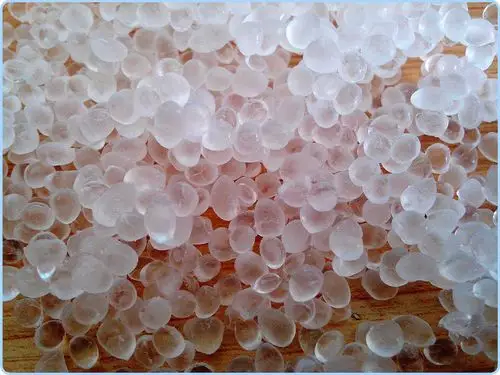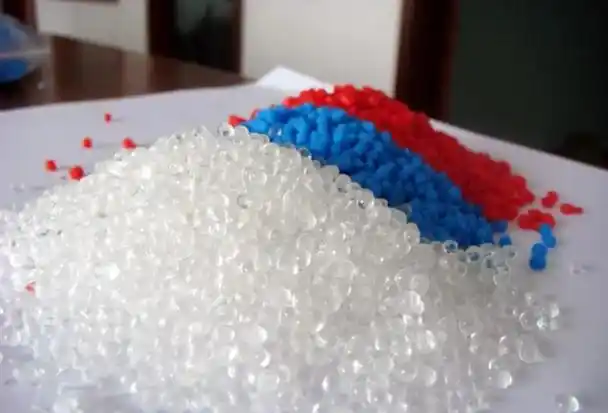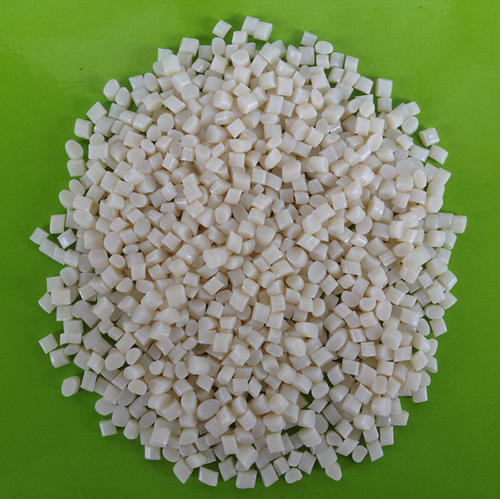Having spent nearly two decades in the materials and manufacturing industry, I’ve had the chance to work with a wide range of polymers, from rigid plastics to stretchy elastomers. One process that’s always fascinated me is TPE overmolding, a technique that combines the soft, flexible qualities of Thermoplastic Elastomer (TPE) with a rigid substrate to create products that are both functional and comfortable. If you’re curious about what TPE overmolding looks like, feels like, or how it’s used, let me share my firsthand experiences. From the tactile sensation of a TPE-overmolded grip to its practical applications in everyday products, I’ll walk you through what makes this process so special and why it’s become a go-to in industries like consumer goods, medical devices, and more.

My First Experience with TPE Overmolding
I still remember the first time I held a TPE-overmolded product—a toothbrush with a soft, grippy handle. The rigid plastic core gave it structure, but the TPE layer added a cushioned, non-slip surface that felt natural in my hand. It wasn’t just about aesthetics; the TPE made the toothbrush easier to hold, even with wet hands. That moment stuck with me because it showed how TPE overmolding could transform a simple object into something intuitive and user-friendly. Since then, I’ve worked on countless projects involving TPE overmolding, from tool handles to wearable tech, and each time, I’m impressed by how this process balances form and function.
For anyone unfamiliar, TPE overmolding involves molding a layer of TPE over a rigid base material, like plastic or metal, to create a composite part. The result is a product with a hard core for strength and a soft outer layer for comfort. But what does it really look like, and why does it matter? Let’s dive in.
The Look and Feel of TPE Overmolding
When you pick up a TPE-overmolded product, the first thing you notice is the dual texture. The TPE layer is typically smooth and slightly tacky, offering a grippy, comfortable feel that contrasts with the hard, unyielding substrate underneath. Imagine a power tool handle: the core is a rigid plastic like ABS or polypropylene for durability, while the TPE overlay feels soft and ergonomic, reducing strain during use. In my work, I’ve seen TPE overmolding used to create everything from sleek, matte finishes to vibrant, glossy surfaces, depending on the design goals.
The thickness of the TPE layer can vary, which affects the feel. For example, in a project for a medical device, we used a thin TPE layer (about 1 mm) to add a subtle, skin-friendly texture to a handheld monitor. In contrast, a sports grip might use a thicker layer (2-3 mm) for extra cushioning. The beauty of TPE overmolding is its ability to be tailored—whether you want a barely-there softness or a plush, padded surface.

How TPE Overmolding Works
As someone who’s overseen TPE overmolding projects, I can tell you it’s a fascinating process. The rigid substrate is molded first, often using injection molding. Then, in a second step, TPE is injected or molded over the substrate, bonding chemically or mechanically to create a seamless part. The key is ensuring strong adhesion between the TPE and the substrate, which depends on the materials chosen and the molding process.
In one project, we overmolded TPE onto a polycarbonate base for a kitchen gadget. The TPE had to stick perfectly to avoid peeling, so we spent days testing primer treatments and mold temperatures. The result was a durable, soft-touch grip that customers loved. This process isn’t just technical—it’s an art form that requires balancing material properties and manufacturing precision.
Key Characteristics of TPE Overmolding
To give you a clear picture, here’s a table summarizing the key features of TPE overmolding based on my experience:
|
Feature |
Description |
Common Applications |
Why It Matters |
|---|---|---|---|
|
Texture |
Soft, grippy TPE layer over a rigid core, customizable for matte or glossy. |
Tool handles, phone cases, wearables |
Enhances comfort and grip. |
|
Durability |
Combines TPE’s elasticity with the substrate’s strength. |
Sports equipment, medical devices |
Ensures long-lasting performance. |
|
Adhesion |
TPE bonds to substrates like ABS, PC, or metal, depending on formulation. |
Automotive parts, consumer electronics |
Prevents peeling or delamination. |
|
Aesthetics |
TPE can be colored, textured, or translucent for visual appeal. |
Toys, fitness gear, kitchen tools |
Adds design flexibility and branding. |
This table reflects what I’ve seen in practice. For instance, in a project for a fitness tracker, we used TPE overmolding to create a vibrant, translucent strap that was both comfortable and durable. The TPE layer bonded perfectly to the plastic core, ensuring the strap wouldn’t tear even after heavy use.
Why TPE Overmolding Is So Popular
In my years working with manufacturers, I’ve seen TPE overmolding become a favorite for several reasons:
1. Enhanced User Experience
TPE overmolding makes products feel premium and intuitive. I once worked on a line of kitchen knives where the TPE-overmolded handles were a game-changer. The soft, non-slip grip made chopping safer and more comfortable, even during long prep sessions. Customers raved about the ergonomic design, which boosted the brand’s reputation.
2. Versatility Across Industries
From consumer electronics to medical devices, TPE overmolding is everywhere. In a medical project, we used TPE overmolding for a surgical tool handle, combining a rigid core for precision with a soft TPE layer for surgeon comfort. The material’s biocompatibility (in certain grades) was a key selling point.

3. Improved Durability
The combination of a strong substrate and a flexible TPE layer creates parts that can take a beating. I’ve seen TPE-overmolded phone cases survive drops that would crack pure plastic cases, thanks to the shock-absorbing TPE.
4. Aesthetic Flexibility
TPE can be molded in vibrant colors, matte finishes, or even textured patterns, making it a designer’s dream. In a project for a kids’ toy, we used TPE overmolding to create a colorful, tactile surface that was both safe and visually appealing.
Real-World Examples of TPE Overmolding
You’ve probably used TPE-overmolded products without realizing it. Here are some common applications where this process shines:
Tool Handles: Power tools and kitchen utensils often use TPE overmolding for a comfortable, non-slip grip.
Phone and Tablet Cases: The soft, shock-absorbing TPE layer protects devices while feeling great in hand.
Wearable Tech: Smartwatch straps use TPE overmolding for a flexible, skin-friendly fit with a rigid core for structure.
Medical Devices: Handles for surgical tools or diagnostic devices often feature TPE for ergonomics and biocompatibility.
Sporting Goods: Grips for rackets or bike handles use TPE overmolding for cushioning and durability.
In one project, we used TPE overmolding for a line of outdoor flashlights. The TPE layer provided a grippy, weather-resistant surface over a rugged aluminum core, making the flashlight ideal for harsh conditions. Users loved the tactile feel, and the product became a bestseller.
TPE Overmolding vs. Other Techniques
To put TPE overmolding in context, here’s how it compares to other common material combinations, based on my experience:
|
Technique |
Texture |
Durability |
Cost |
Best For |
|---|---|---|---|---|
|
TPE Overmolding |
Soft TPE over rigid core |
High, with shock absorption |
Moderate |
Ergonomic, durable products |
|
Pure TPE |
Soft, uniform texture |
Moderate, less structural |
Lower |
Flexible, single-material parts |
|
Silicone Overmolding |
Slick or sticky over rigid core |
High, but complex processing |
Higher |
High-heat or medical applications |
|
Hard Plastic Only |
Rigid, no soft layer |
High, but less comfortable |
Lower |
Basic, non-ergonomic parts |
In a project for a gaming controller, we initially considered silicone overmolding but switched to TPE because it was easier to process and offered a better grip at a lower cost. The result was a controller that felt premium and withstood hours of intense gameplay.
Challenges of TPE Overmolding
While TPE overmolding is versatile, it’s not without its hurdles. Here are some challenges I’ve faced:
Adhesion Issues: If the TPE and substrate aren’t compatible, the layers can peel apart. I’ve had to reject batches where improper bonding caused delamination, so I always test material compatibility early.
Cost Considerations: Overmolding is more expensive than single-material molding due to the two-step process. I recommend budgeting for prototype testing to avoid costly reworks.
Heat Sensitivity: TPE can soften at high temperatures, which I learned during a project where a TPE-overmolded handle warped in a hot environment. For heat-exposed products, I now use heat-resistant TPE grades.
Tooling Complexity: Overmolding requires precise molds, which can be tricky to design. I’ve spent hours tweaking mold designs to ensure a seamless TPE layer.
Despite these challenges, I’ve found that working with experienced suppliers and testing thoroughly can overcome most issues. It’s all about planning and precision.

My Tips for TPE Overmolding Success
Based on my years of trial and error, here are some practical tips for anyone exploring TPE overmolding:
Choose the Right Substrate: Ensure the TPE is compatible with the base material (e.g., ABS, PC, or metal). I always request adhesion test data from suppliers.
Test Layer Thickness: A thicker TPE layer adds cushioning but may reduce rigidity. I typically start with a 1-2 mm layer and adjust based on testing.
Check Certifications: For medical or food-contact products, use FDA-compliant or biocompatible TPE. I once had to redo a project because the TPE wasn’t certified for skin contact.
Prototype Early and Often: Small variations in molding conditions can affect the final product. I always order multiple prototypes to test texture, adhesion, and durability.
Why TPE Overmolding Feels Like a Game-Changer
After years of working with TPE overmolding, I’m still amazed by its ability to elevate products. It’s not just about adding a soft layer—it’s about creating a seamless user experience that combines comfort, durability, and style. Whether it’s a grippy tool handle or a shock-absorbing phone case, TPE overmolding makes products feel thoughtful and well-designed.
In one of my recent projects, we used TPE overmolding for a line of eco-friendly water bottles. The TPE layer created a soft, grippy cap over a rigid plastic base, making it easy to open while ensuring a leak-proof seal. The product’s success reminded me why I love this process—it’s a small detail that makes a big difference.
Closing Thoughts
TPE overmolding is a brilliant marriage of softness and strength, transforming everyday products into something special. Its tactile appeal, durability, and design flexibility make it a favorite in my work, and I suspect you’ll start noticing it in the things you use daily. Whether you’re a designer looking to enhance a product or just curious about the materials around you, I hope this deep dive into TPE overmolding has shed light on its magic. It’s a process that proves small innovations can have a big impact.

Related Questions and Answers
Q: Is TPE overmolding safe for skin contact?
A: Yes, many TPE grades used in overmolding are biocompatible and safe for skin contact, especially for medical or wearable products. I always ensure ISO 10993 or FDA compliance for such applications.
Q: How does TPE overmolding compare to silicone overmolding?
A: TPE overmolding is more cost-effective and easier to process than silicone, which requires complex curing. In my projects, TPE offers a better grip for most consumer applications.
Q: Can TPE-overmolded products be used outdoors?
A: They can, but I recommend UV-stabilized TPE to prevent degradation from sunlight. I’ve seen non-stabilized TPE crack after prolonged exposure, so specify outdoor use upfront.
Q: Is TPE overmolding eco-friendly?
A: TPE is recyclable, and overmolded scraps can often be reprocessed. I’ve worked with brands that use TPE overmolding to create sustainable, user-friendly products.





